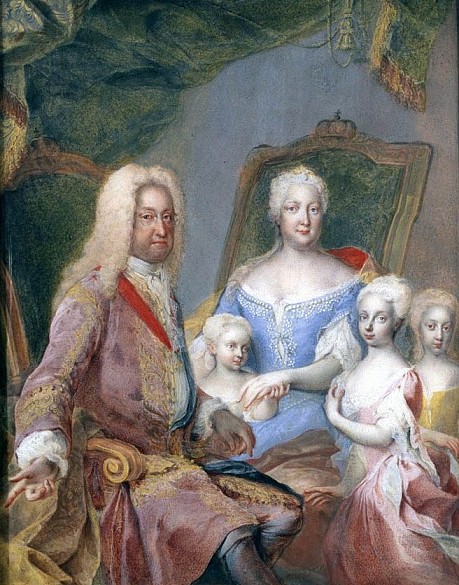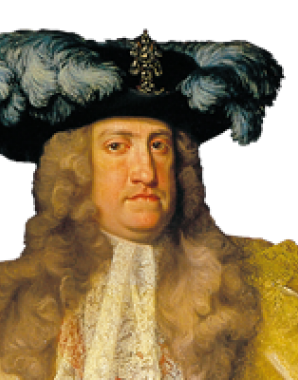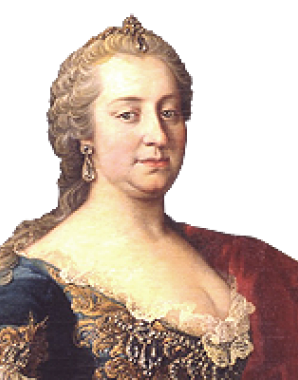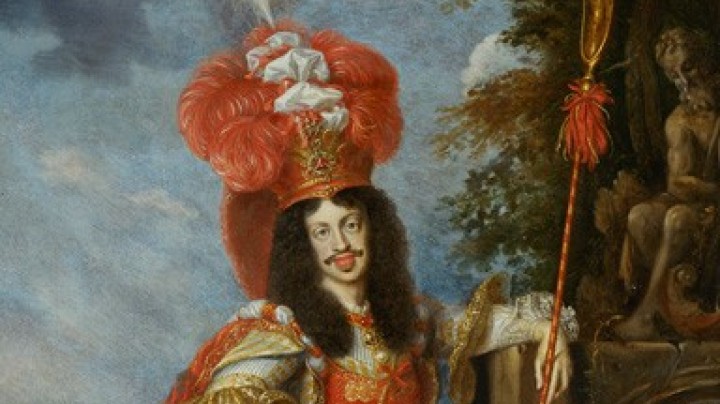Elisabeth Christine and the desperate struggle to ensure the continuation of the dynasty
When it became apparent that no male heir would be forthcoming from the marriage of Charles’s elder brother Joseph, the task of continuing the dynasty lay with Charles. A careful search began to find him a suitable wife.
The candidates were chosen not only according to their lineage but also their health and constitution. A physical disposition for motherhood was an important criterion, and a team of physicians was appointed to examine the candidates.
From a selection two women were deemed eligible: Maria Victoria of Savoy-Carignan (a niece of Prince Eugene of Savoy) and Elisabeth Christine of Brunswick-Lüneburg-Wolfenbüttel (1691–1751). In the end political and genealogical considerations swung the choice in favour of the German princess from the ancient lineage of the Welfs (Guelphs).
Although Elisabeth Christine’s father ruled over a minor state in Lower Saxony of only regional significance, he was descended from one of the most venerable German princely dynasties. Elisabeth’s family lobbied intensively for her to be chosen, seeing in this an important trump card in the rivalry between the minor German states. The driving force behind the campaign was the bride’s grandfather, Duke Anton Ulrich von Brunswick-Lüneburg (1633–1714), an archetypal grand seigneur of the Baroque age who divided his energies between his passion for the arts (even dabbling in verse himself) and his political ambitions.
There was one obstacle, however, in the shape of the bride’s Protestant faith. After vigorous coaxing by her relatives and the use of subtle theological arguments the Lutheran princess, who was very devout, was eventually persuaded to convert to Catholicism in 1707. The last impediment having been removed, the wedding was celebrated on 23 April 1708.
Aged sixteen at the time of her marriage, Elisabeth Christine was considered to be one of the most beautiful and learned noblewomen in Europe. Contemporary accounts pay particular attention to her pale complexion, blue eyes and magnificent blonde hair, which earned her the epithet of ‘Weisse Liesl’ (White Lizzy) in Vienna. Her admirers were particularly impressed by the allegedly perfect form of her hands and arms.
Elisabeth Christine followed her husband to Spain, where Charles agitated against his adversary Philip of Anjou in pressing his claim to the Spanish throne, albeit with varying success. After the sudden death of his brother Joseph (1711) Charles also inherited the Austrian Monarchy and became a candidate for the imperial throne. Charles returned to Central Europe while Elisabeth was appointed governor and captain-general in Barcelona in his stead. Despite fighting a lost cause, she unexpectedly demonstrated great political skill in this difficult position.
Once she arrived in Vienna Elisabeth Christine – now empress as Charles’s wife – was excluded from any political influence. She tried in vain to promote the interests of her relatives in Vienna and became entangled in rivalry with the two dowager empresses at the court, her mother-in-law Eleonore Magdalena and her sister-in-law Amalie Wilhelmina.
Elisabeth Christine’s position at the Viennese court was made even more difficult by the fact that she remained childless for a long time. It was not until 1716, eight years after the wedding, that she gave birth to her first child, the long-awaited male heir, who was baptized Leopold. However, the infant died after only a few months, whereupon Charles donated a life-sized silver-gilt votive figure of his late son to the shrine to the Virgin Mary at Mariazell, petitioning for further male offspring.
However, ‘only’ three daughters were to follow: Maria Theresa (1717–1780), Maria Anna (1718–1740) and Maria Amalia (1724–1730), who died in childhood.
A whole range of measures was undertaken to move the higher powers to grant the birth of a male heir, including the belated coronation of Charles VI in Prague: according to a widespread popular Bohemian superstition a son would only be born to a rightfully anointed and crowned king. The imperial couple travelled to Prague to perform the ceremonies, and Elisabeth did in fact become pregnant during their sojourn in Bohemia. The anecdote recounting how the assembled estates raised their glasses at the coronation banquet to ‘Hansl im Keller’ (‘Little Johnny in the cellar’) – that is, to the unborn, hopefully male, child in its mother’s womb – shows that hope of a crown prince had not been abandoned. However the pregnancy resulted in the birth of another girl, their third and last daughter Maria Amalie.
The empress was subjected to a plethora of different and in some cases bizarre treatments ranging from medicine to magic. One of these was the injunction to drink a not inconsiderable quantity of red wine every day, resulting not in pregnancy but an addiction to alcohol.
Elisabeth Christine was upset by her ‘failure’ to produce a male heir to the throne. The empress subsequently became a depressed, corpulent matron who suffered from rheumatism and difficulty in breathing.
After the death of her husband in 1740 Elisabeth Christine was also politely but firmly excluded from the affairs of government by her daughter Maria Theresa. The dowager empress died on 21 December 1750 and is buried in the crypt of the Church of the Capuchin Friars in Vienna.















